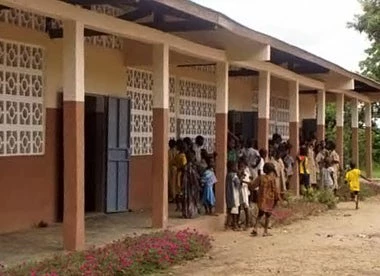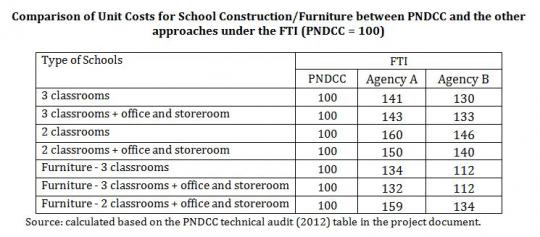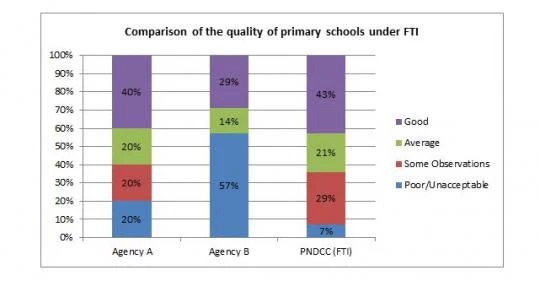
An assumption behind CDD is that communities with local knowledge of resources and environment are better positioned to figure out the best way to build their own public infrastructure in their interest. Indeed, there is some evidence that community-built infrastructure can be cheaper when compared to infrastructure built by government or outside contractors (for example, Wong (2012) introduces several cases of “CDD’s cost effectiveness as compared to equivalent works built through other government service delivery mechanisms”).
However, much of the available evidence comes from a comparison between “community-built infrastructure” and “other-entity built similar infrastructure” constructed at a different time. It is difficult to find, or to set up, an experiment where a set of identical infrastructure projects are built by both communities and others at the same time under similar conditions, and in numbers large enough to allow for comparison between outcomes.
In this regard, the recently completed National Community Driven Development Project (“PNDCC” in French) and the Fast Track Initiative (FTI) Education project in Benin present just this type of “natural experiment.”
In these two projects, a large number of identical primary schools were built that had to meet the same government building standards – some built through management by communities and others by two large agencies hired directly by the government. This unique case permits a comparison at around the same time and under the same conditions.
Taking advantage of this “natural experiment,” an independent technical audit for PNDCC (2012) as well as comparative reviews under FTI (conducted during World Bank supervision missions in 2010 and 2011) found that for primary schools built by communities, the CDD approach delivered results “faster,” “at lower cost,” and “at similar quality levels” than schools built by others.
Faster results: In delivering a packet of classrooms during the same time period, the vast majority of PNDCC classrooms were more than 75 percent advanced and most were completed, versus the other two agencies where most classrooms were still less than half way completed at the time of the review in October 2011.
Lower unit costs: Under the FTI reviews, unit costs for construction implemented by two other agencies were 45 and 29 percent higher than those constructed through community management under PNDCC: 71,400 or 80,100 FCFA (140 or 158 USD)/m2 for other agencies, compared to 55,500 FCFA (109 USD)/m2 for PNDCC. The PNDCC technical audit also found similar results; as shown below, unit costs for classrooms constructed through two contract management agencies were between 30 and 60 percent higher than those built through the CDD approach in PNDCC. Similar levels of cost effectiveness were found in the provision of school furniture (desks and benches).
Average or better quality: PNDCC construction quality was at least as good as the other two approaches, although there was room for improvement in all three programs.
Spillover effects to the local economy: PNDCC tended to work with smaller, locally based construction firms. Field observations noted that this reinforced local small businesses, who acquired more competency and experience. By initiating a large number of sub-projects at the local level, PNDCC created temporary employment and increased competitiveness in the construction and public works sector in these areas, thus had positive spillovers on the local economy.
The Benin example strengthens the argument that community management can be a faster and more cost-effective way of delivering services to rural communities in need. Along with capacity building and implementation support, regular technical audits help ensure efficiency and technical quality.
Finally, it also stimulates discussions around why external contractors tended to be slower and more expensive. Observed reasons for the differences include additional costs from "middle-men," contract overhead fees, and lack of direct incentives to work cheaply and quickly.
This blog entry is based on an interview with John Van Dyck (Sr. Operations Officer in Africa Region Social Protection Sector, and the Task Team Leader for the PNDCC project) who provided insights and resources, as well as PNDCC Implementation Completion Report (ICR) (October 2012). PNDCC Project Website (in French): http://www.pndcc.org/public/index.php



Join the Conversation